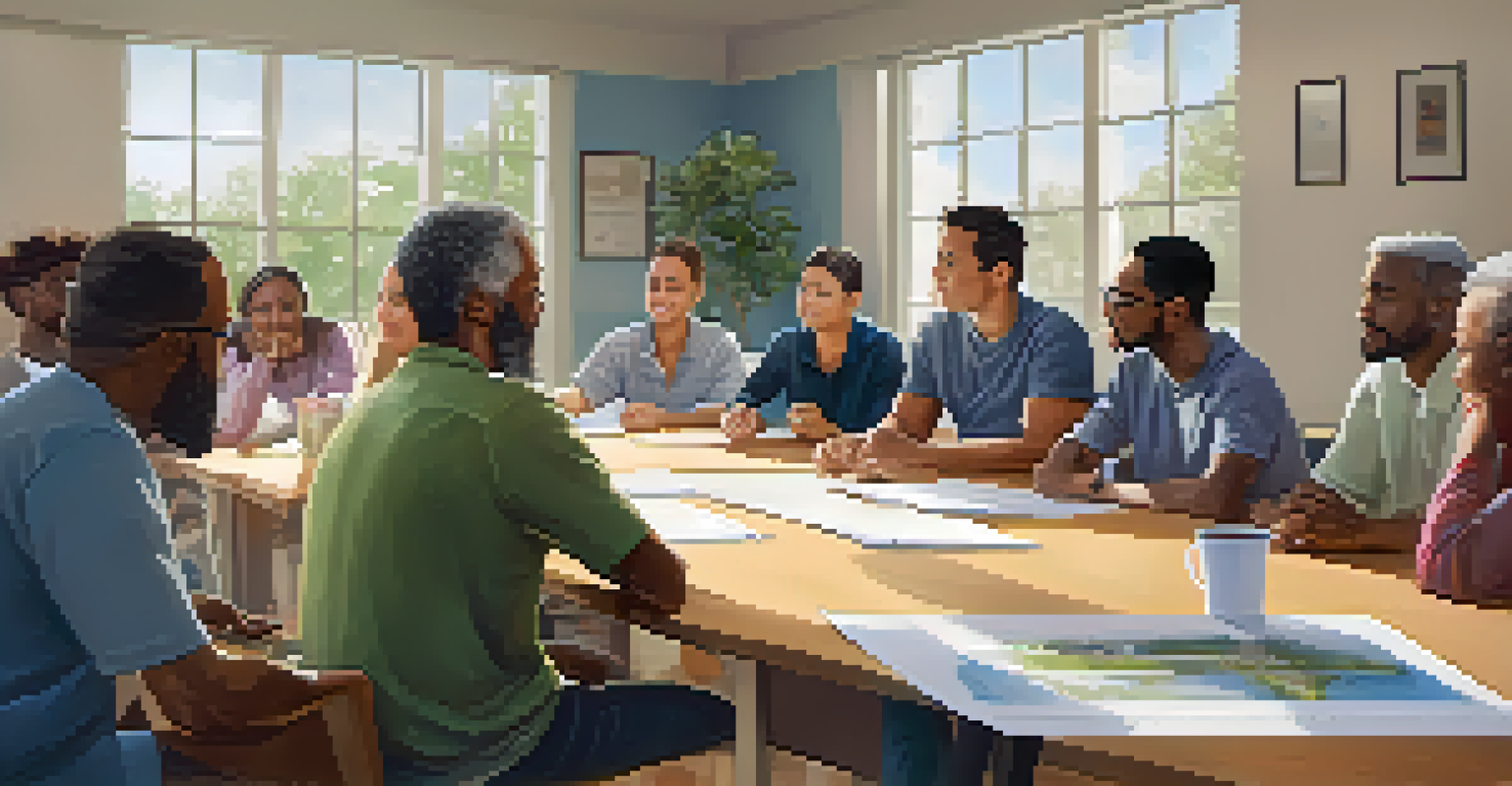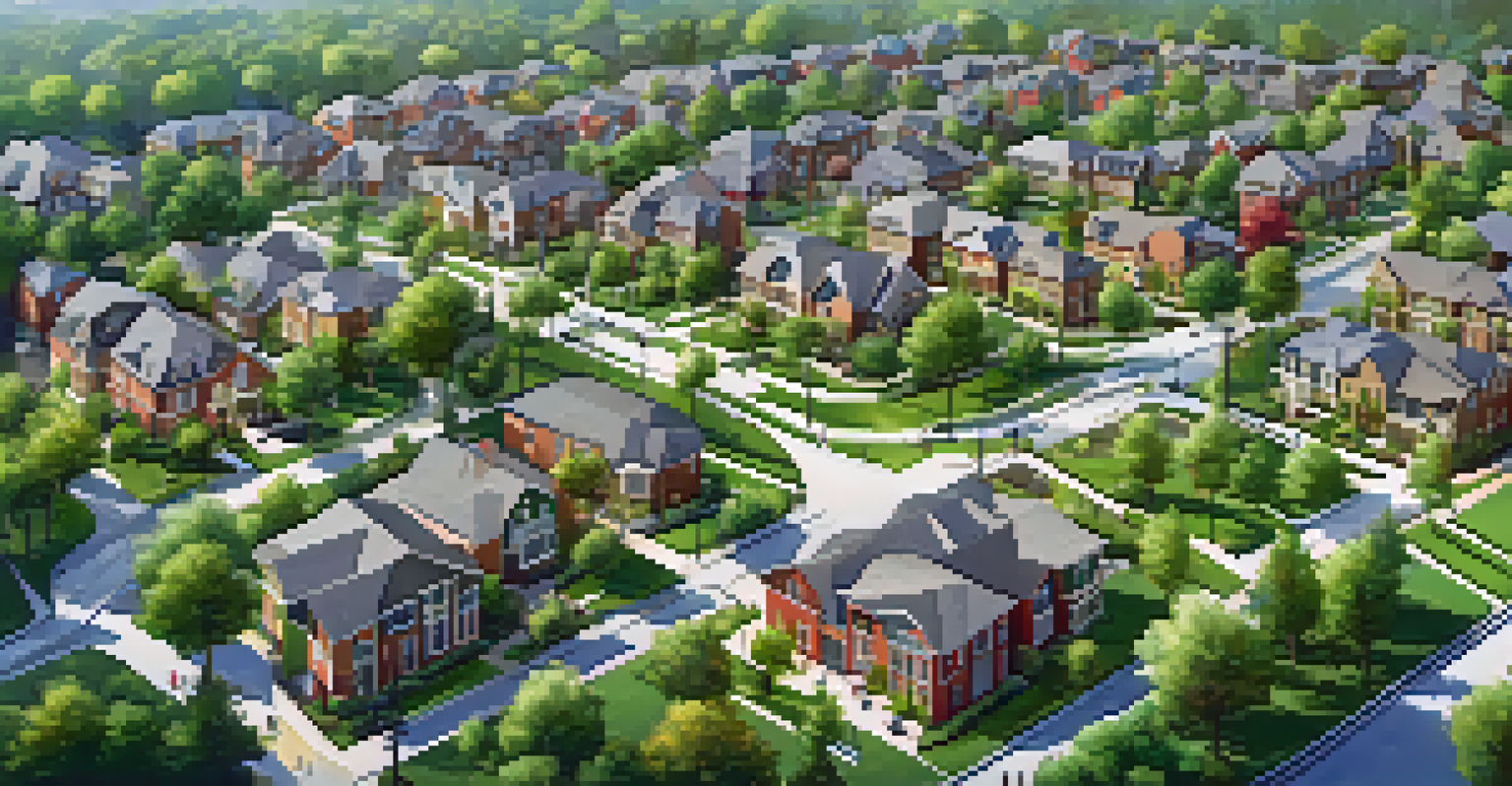The Role of HOAs in Community Development Projects

Understanding the Basics of Homeowners Associations (HOAs)
Homeowners Associations (HOAs) are organizations established within residential communities to manage common areas and enforce community rules. They play a vital role in preserving property values and ensuring a pleasant living environment. Typically, residents of a community become members of the HOA when they purchase property, which often involves paying monthly or annual dues.
The power of a community to create a better life for its residents is only limited by the willingness of its members to work together.
By governing aspects such as landscaping, maintenance, and community events, HOAs help create a cohesive neighborhood atmosphere. Their regulations can range from architectural guidelines to rules about noise levels, all aimed at promoting harmony among residents. Understanding these basics is essential when discussing the impact of HOAs on community development projects.
HOAs also serve as a platform for residents to voice concerns and participate in community decisions. This engagement fosters a sense of belonging and responsibility, encouraging residents to actively contribute to their neighborhood's growth.
The Importance of HOAs in Community Planning
HOAs play a crucial role in the planning stages of community development. They often collaborate with developers to establish guidelines that align with the community's vision and needs. This collaboration ensures that new projects reflect the desires of current residents while also attracting potential buyers.

Involving HOAs in the planning process helps to address concerns early on, such as traffic flow, public spaces, and environmental impact. By representing the interests of residents, HOAs can advocate for features that enhance community well-being, such as parks, walking trails, and recreational facilities. These contributions ultimately shape a more functional and enjoyable living environment.
HOAs Enhance Community Engagement
Homeowners Associations foster resident participation in community development, creating a sense of ownership and improving project outcomes.
Moreover, HOAs can assist in securing funding or grants for community projects, making them an invaluable resource in the development process. Their involvement not only impacts the physical structure of a community but also the social fabric that binds residents together.
Encouraging Resident Participation Through HOAs
One of the essential functions of HOAs is to encourage resident participation in community development projects. By organizing meetings, workshops, and events, HOAs create opportunities for residents to voice their opinions and contribute ideas. This engagement not only enhances the quality of projects but also fosters a sense of ownership among residents.
Community is much more than belonging to something; it’s about doing something together that makes belonging matter.
For instance, when planning a new community park, an HOA might solicit feedback through surveys or community forums. This approach ensures that the park meets the needs and preferences of the residents, whether it’s a playground for kids, picnic areas, or sports facilities. The result is a space that truly reflects the community's values.
Furthermore, active participation can lead to stronger community bonds. When residents collaborate on projects, they build relationships that extend beyond the development itself, creating a supportive network that enriches the entire neighborhood.
Balancing Development and Community Needs
HOAs have the challenging task of balancing new development with the existing character of a community. As neighborhoods evolve, HOAs must navigate resident concerns about changes that may affect their quality of life. This often means negotiating with developers to find solutions that satisfy both parties.
For example, if a developer proposes a high-density housing project, the HOA might advocate for measures that preserve green spaces or maintain architectural consistency. By acting as a mediator, the HOA ensures that development aligns with the community’s long-term vision while still accommodating growth.
HOAs Balance Development Needs
They play a crucial role in negotiating between developers and residents to maintain the community's character while accommodating growth.
Ultimately, this balance is critical for maintaining property values and a desirable living environment. When residents feel heard and their needs are prioritized, they are more likely to support responsible development that benefits everyone.
Enhancing Property Values Through HOA Involvement
One of the primary benefits of HOAs in community development is their ability to enhance property values. By enforcing consistent standards for maintenance and aesthetics, HOAs help create an attractive environment that appeals to potential buyers. This can lead to higher property values and a stronger real estate market within the community.
Moreover, well-managed HOAs often invest in community improvements, such as landscaping, signage, and recreational facilities. These enhancements not only beautify the area but also create a sense of pride among residents. When people take pride in their neighborhood, they are more likely to maintain their homes and contribute positively to the community.
As a result, properties within HOA-governed communities frequently sell for higher prices compared to those in unregulated areas. This trend underscores the importance of HOAs in fostering a thriving community that benefits both current residents and future homeowners.
Navigating Challenges Faced by HOAs in Community Development
Despite their many benefits, HOAs also face challenges in community development projects. Conflicts can arise between residents and the HOA board regarding decisions that impact the community. Disputes over rules or project proposals can create tension and hinder progress, making effective communication essential.
To mitigate these challenges, HOAs must prioritize transparency and inclusivity in their decision-making processes. By keeping residents informed and involved, HOAs can reduce misunderstandings and foster a collaborative environment. This approach not only helps to resolve conflicts but also strengthens trust between the HOA and the community.
HOAs Boost Property Values
By enforcing standards and investing in community improvements, HOAs can significantly enhance property values and attract potential buyers.
Additionally, HOAs must be adaptable and responsive to changing needs as communities evolve. Recognizing that flexibility is key to successful development can help HOAs navigate challenges and continue to serve the best interests of their residents.
Future Trends in HOAs and Community Development
As communities continue to grow and evolve, HOAs are likely to play an increasingly important role in community development. Future trends may include a greater emphasis on sustainability, with HOAs advocating for eco-friendly practices and green spaces. These initiatives not only address environmental concerns but also enhance residents' quality of life.
Technology will also shape the future of HOAs, enabling better communication and engagement with residents. Online platforms can facilitate community discussions, streamline decision-making, and allow for easy access to important information. This digital transformation can help HOAs connect with younger residents and foster a sense of community.

Ultimately, the evolving role of HOAs in community development will depend on their ability to adapt and innovate. By staying attuned to the needs of residents and embracing new trends, HOAs can continue to contribute positively to the growth and development of their communities.